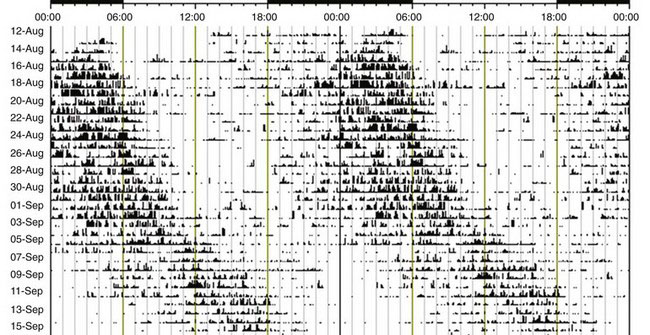Section 5 Circadian Rhythm Disorders
A 22-year-old Man with Excessive Daytime Sleepiness
A 68-year-old Woman with Early Morning Awakening
No cardiographic or EEG abnormalities were seen. Based on these findings you should:
The 42-year-old Man Who Cannot Keep a Job
A 42-year-old man comes to the clinic with a complaint of an irregular sleep schedule. He was recently fired from work for tardiness. To assess his sleep–wake schedule, you ask him to wear an actigraph for 2 weeks. The results are shown in Figure 5–1.
A 12-year-old girl with insomnia and daytime sleepiness
A Case of Hating the Night Shift
A 27-year-old women working a local hospital as a nurse began working a rotating shift about 6 months ago. Her rotation schedule was days to evenings to nights. Her schedule is to work three 12-hour days per week and then rotates to the next later shift. At first the new schedule was working out great for her family. Initially she had no trouble adapting to the rotating shift although she stated that the overnights were the hardest because she has to fight off sleepiness. After a few months of rotating she found it increasingly difficult to stay awake all night on the night shift. A coworker found her asleep in the nurse’s station recently, and now the patient is worried about losing her job.




